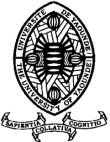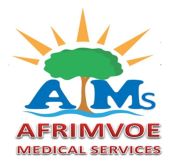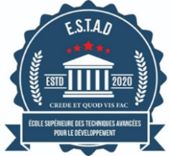Tooth Extraction and Bone Drill Hole in Wistar Rats: Kinetics of Biochemical Markers During Wound Healing
Extraction Dentaire et Trou de Forage Osseux Chez les Rats Wistar : Cinétique des Marqueurs Biochimiques Lors de la Cicatrisation
DOI:
https://doi.org/10.5281/hra.v2i11.6141Keywords:
extraction dentaire ; trou de forage osseux ; marqueurs biochimiques ; cicatrisation osseuseAbstract
ABSTRACT
Introduction. Biochemical markers provide a dynamic picture of the bone remodeling process. The aim of this study was to determine the kinetics of remodeling markers during bone healing under two models of induced lesions in the Wistar rat. Methodology. Over a three-month period, from February to April 2024, we conducted an experimental study involving wistar rats weighing a minimum of 150g and aged eight weeks. The animals (N=24) were randomly divided into three groups of eight rats. Group I was the control group. In group II, the rats had undergone dental extraction, while in group III, a bone drill hole was made in the mandibular symphysis. The follow-up period was 45 days. Data analysis was performed using Graph pad sprim software version 8.0.1. l. Results were expressed as mean plus or minus standard error on the mean. Results. We included 24 rats. We observed weight loss in Group II females at weeks 2 and 6. PAL concentrations increased significantly in groups II and III at weeks 4,5,6. On the other hand, we observed a decrease in calcium concentration in female rats of groups II and III at week 4. Conclusion. At week 4 post-operatively, the determination of PAL and/or calcium could provide information on the level of consolidation.
RÉSUMÉ
Introduction. Les marqueurs biochimiques fournissent une image dynamique du processus de remodelage osseux. Le but de cette étude était de déterminer la cinétique des marqueurs de remodelage lors de la cicatrisation osseuse sous deux modèles de lésions induites chez le rat de wistar. Méthodologie. Nous avons mené sur une durée de trois mois, allant de Février à Avril 2024 une étude expérimentale incluant les rats wistar d’un poids minimal de 150g et d’un âge de huit semaines. Les animaux (N=24), étaient répartis de manière aléatoire en trois groupes de huit rats. Le groupe I représentait le groupe témoin. Dans le groupe II les rats avaient subi une extraction dentaire, tandis que dans le groupe III, un trou de forage osseux était réalisé sur la symphyse mandibulaire. Le suivi s’est fait sur 45 jours. L’analyse des données a été faite avec le logiciel Graph pad sprim version 8.0.1. l. Les résultats ont été exprimés sous forme de moyenne plus ou moins erreur standard sur la moyenne. Résultats. Nous avons inclus 24 rats. Nous avons observé une perte de poids des femelles du groupe ii aux semaines 2 et 6. Les concentrations de pal augmentaient significativement dans les groupes II et III aux semaines 4,5,6. Par contre on observait une diminution de la concentration de calcium chez les rats femelles des groupes II et III à la semaine 4. Conclusion. A la semaine 4 post-opératoire, le dosage de la PAL et/ou du calcium pourrait renseigner sur le niveau consolidation.
References
M.-L. Colombier, P. Lesclous, J.-F. Tulasne. La cicatrisation des greffes osseuses. Rev Stomatol Chir Maxillofac. 2005; 106(3): 157-65.
P. Garnero, P.-D. Delmas. Les marqueurs biochimiques du remodelage osseux : application à l’exploration des ostéoporoses. Annales de Biologie Clinique. 1999;57(2):137-48
G. Vani, P. Veena, R. V. Suresh Kumar, M. Santhi Lashmi, D. Rani Prameela and Biswnath Kundu. Evaluation of Serum Biochemical Parameters for Assessment of Long Bone Fracture Healing in Dogs Subjected to Intramedullary Pinning ; International Journal of Current Microbiology and Applied Sciences. 2021 ; 10(5) : 448-5.
JABAR, Sara, et al. Fractures alvéolo-dentaires: Aspects épidémiologiques, cliniques, paracliniques et thérapeutiques. A propos de 50 cas. 2022.
Kelly, D. M., & Jones, T. H. (2015). Testosterone and obesity. Obesity reviews : an official journal of the International Association for the Study of Obesity. 2015; 16(7) :581–606.
Neto VFP, Ribeiro RM, Morais CS, Campos MB, Vieira DA, Guerra PC, et al. Chenopodium ambrosioides as a bone graft substitute in rabbits radius fracture. BMC Compl Alternative Med. 2017;17(1):350-6.
BOSKEY, Adele L. et ROBEY, Pamela Gehron. La composition de l'os. Manuel sur les maladies osseuses métaboliques et les troubles du métabolisme minéral. 2013 ; 49-58.
Nilajagi A. Studies on typre Ia external skeletal fixator with tie-in configuration for the treatment of comminuted diaphyseal femur fractures in dogs. M.V.Sc. Thesis, Karnataka Veterinary Animal and Fisheries Sciences University, Bidar, Karnataka, India; 2021.
Kumar PS, Latha C, Rao TM, Purushotham G. Clinical study on the use of limited contact dynamic compression plate (LC-DCP) for stabilization of long bone fractures in dogs. The Pharma Innovation Journal. 2019;8(12):323- 9.
Giri R, Giri K, Palandurkar M. Use of biochemical parameters in radiologically proved fracture healing property of Arjuna Terminalia, in rats. Res J Pharm, Biol Chem Sci. 2015 ;6(4): 336–43.
Downloads
Published
How to Cite
Issue
Section
License
Copyright (c) 2024 Nkolo Tolo Francis Daniel, Nkeck Jan Rene, Tanetchop Magouo Nelly, Tcheutchoua Yannick Carlos , Mame Momo Edwige Léa, Ama Moor Vicky Jocelyne

This work is licensed under a Creative Commons Attribution-NoDerivatives 4.0 International License.
Authors who publish with this journal agree to the following terms:
- Authors retain copyright and grant the journal right of first publication with the work simultaneously licensed under a Creative Commons Attribution License CC BY-NC-ND 4.0 that allows others to share the work with an acknowledgement of the work's authorship and initial publication in this journal.
- Authors are able to enter into separate, additional contractual arrangements for the non-exclusive distribution of the journal's published version of the work (e.g., post it to an institutional repository or publish it in a book), with an acknowledgement of its initial publication in this journal.
- Authors are permitted and encouraged to post their work online (e.g., in institutional repositories or on their website) prior to and during the submission process, as it can lead to productive exchanges, as well as earlier and greater citation of published work










